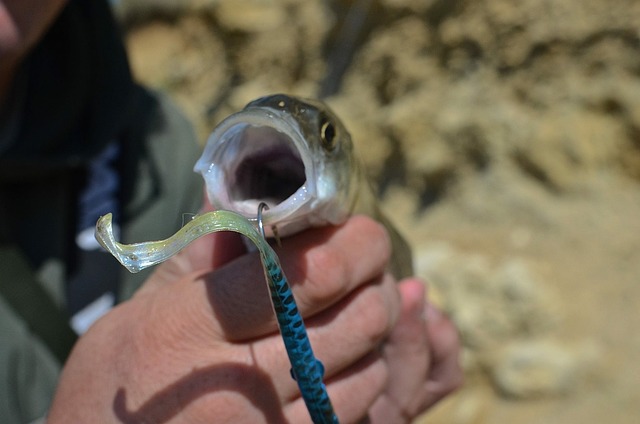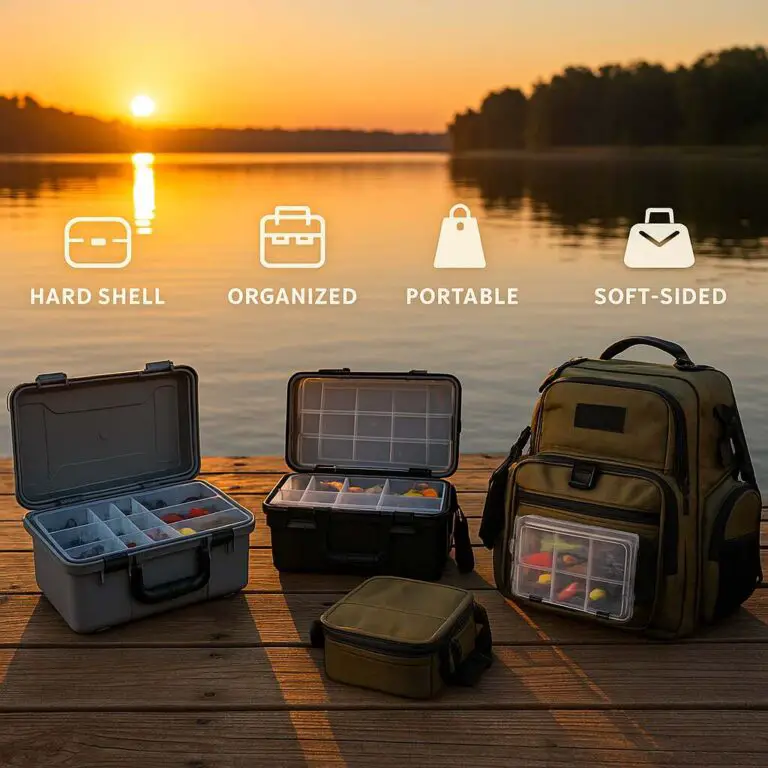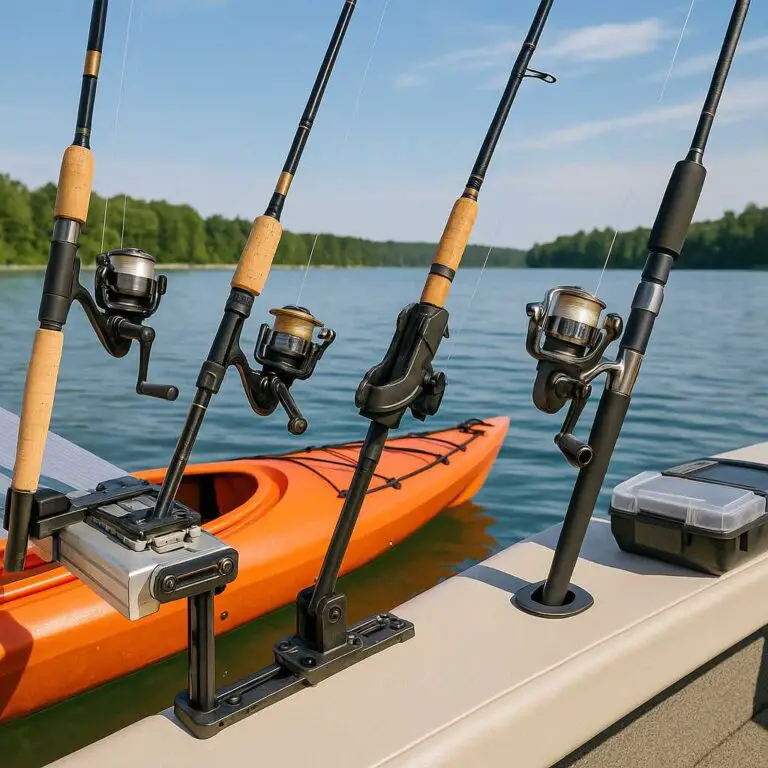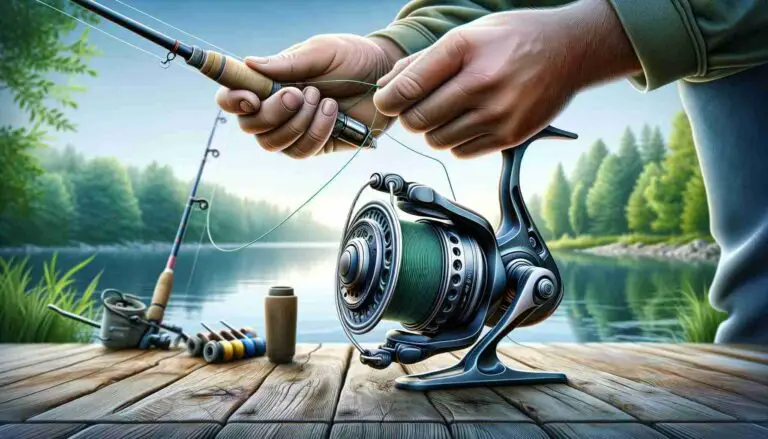When it comes to fishing, there are countless lures and baits to choose from, but one that stands out for its versatility and effectiveness is the spinner bait. A spinnerbait is a type of fishing lure that consists of a wire frame with a spinning blade and a weighted head, typically dressed in a skirt of rubber or silicone strands. This combination of motion and vibration can attract a variety of fish species, making it a popular choice for anglers of all levels.
However, using a spinner bait requires some finesse and understanding of the ideal fishing conditions, types of fish that respond well, and techniques for using it effectively. In this post, I’ll explore when to use spinnerbait for fishing, from the ideal fishing conditions to common mistakes to avoid. Whether you’re a seasoned angler or just starting out, you’ll learn how to maximize your chances of catching fish with spinner bait.
The Ideal Fishing Conditions for Spinnerbaits
Spinnerbaits are versatile lures that can be effective in a variety of fishing conditions. However, to increase your chances of success, it’s important to pay attention to certain factors that can impact their effectiveness. Here are the ideal fishing conditions:
- Water Temperature: Spinnerbaits tend to be most effective in water temperatures ranging from 50°F to 80°F. In colder water, fish are less active and less likely to chase fast-moving lures like spinnerbaits. On the other hand, in warmer water, fish are more likely to be active and willing to strike a lure.
- Water Clarity: Spinnerbaits can be effective in clear or murky water, but different blade colors and styles may work better in each. In clear water, a silver or gold blade with a flashy skirt can mimic the natural movement of baitfish and be more effective. (Here are what color lures to use in clear water.) In murky water, a darker or more brightly colored blade may be more visible to fish.
- Time of Day: Spinnerbaits can be effective at any time of day, but they tend to work best during low light conditions such as early morning, late evening, or cloudy days. This is because the flash and vibration of the spinnerbait can be more visible to fish in these conditions.
- Weather Conditions: Spinnerbaits can work well in a variety of weather conditions, but certain weather patterns can impact their effectiveness. For example, a light chop on the water’s surface can create more vibration and make the spinnerbait more visible to fish. However, in very windy conditions, it may be difficult to control the bait’s movement and retrieve speed. In addition, during rain or overcast conditions, fish may be more likely to strike a spinnerbait as it imitates the movement of prey seeking shelter from the rain.
Types of Fish That Respond Well to Spinnerbaits
Spinnerbaits can be effective for a variety of fish species, but some respond better than others. Here are 4 of types of fish that respond well to spinnerbaits:
- Bass: Spinnerbaits are a popular choice for bass fishing, especially in shallow waters or areas with a lot of vegetation. The flash and vibration of the spinnerbait can trigger a bass’s predatory instincts, and the weedless design of some spinnerbaits can allow anglers to fish in areas with heavy cover.
- Pike: Pike is aggressive predators that can be caught with a variety of lures, including spinnerbaits. The large, flashy blades of a spinnerbait can mimic the movement of baitfish and attract pike in both clear and murky water.
- Muskie: Muskies, also known as musky, are popular game fish that can grow to impressive sizes. Spinnerbaits with large blades and a heavy weight can mimic the movement of large prey and attract muskies in a variety of fishing conditions.
- Walleye: Walleye are known for their sharp eyesight and can be difficult to catch with certain lures. However, a spinnerbait with a smaller blade and a slow retrieve can mimic the movement of small baitfish and be effective in clear or murky water.
These are just a few of the fish species that respond well to spinnerbaits. However, it’s important to keep in mind that fish behavior can vary by location and season, so it’s important to observe and adjust your approach accordingly.
Techniques for Using Spinnerbaits Effectively
Using a spinnerbait effectively requires some finesse and understanding of the right techniques. Here are some techniques to consider when using a spinnerbait for fishing:
Casting and Retrieving: One of the most common techniques for using a spinnerbait is to cast it out and retrieve it. When casting, try to aim for areas where fish may be hiding, such as near rocks, vegetation, or drop-offs. Vary your retrieve speed and experiment with different pauses and jerks to mimic the movement of baitfish and trigger a strike.
There are several spinnerbait techniques that can be effective, depending on the fishing conditions and type of fish you are targeting. These include:
- Slow-rolling: Retrieving the spinnerbait slowly along the bottom to mimic the movement of a wounded baitfish.
- Yo-yoing: Dropping the spinnerbait to the bottom and then retrieving it quickly, allowing it to rise and fall like a fleeing baitfish.
- Burning: Retrieving the spinnerbait quickly near the surface to create a wake and trigger a reaction strike.
- Stalling: Pausing the spinnerbait near cover or structure, allowing it to sink slowly and then retrieving it again to mimic a baitfish that has stopped to rest.
Adjusting the Spinnerbait for Different Depths Spinnerbaits can be effective at different depths, but it’s important to adjust the weight of the bait and the blade size to match the fishing conditions. A heavier weight can allow the spinnerbait to sink quickly and be effective in deeper waters, while a lighter weight can allow it to stay near the surface and be more visible to fish.
You can increase your chances of catching fish with a spinnerbait by experimenting with different casting and retrieving techniques and adjusting the spinnerbait for different depths. However, keep in mind that fishing techniques can vary by location and season.
Common Mistakes to Avoid When Using Spinnerbaits
While spinnerbaits can be highly effective fishing lures, there are some common mistakes that anglers can make that can reduce their effectiveness. Here are 3 common mistakes to avoid when using spinnerbaits:
- Choosing the Wrong Size or Color: Spinnerbaits come in a variety of sizes and colors, and choosing the wrong one can reduce their effectiveness. Make sure to match the size and color of your spinnerbait to the fishing conditions and the type of fish you are targeting. For example, in clear water, a smaller spinnerbait with a natural color may be more effective, while in murky water, a larger and more brightly colored spinnerbait may be more visible to fish.
- Retrieving Too Quickly or Slowly: Retrieving a spinnerbait too quickly or too slowly can make it less effective. Make sure to vary your retrieve speed and experiment with different pauses and jerks to mimic the movement of baitfish and trigger a strike. It’s important to pay attention to the fishing conditions and the behavior of the fish to adjust your retrieve speed accordingly.
- Using the Wrong Gear: Using the wrong gear, such as a rod that is too stiff or a line that is too light, can reduce the effectiveness of a spinnerbait. Make sure to use a rod and reel that are matched to the size and weight of your spinnerbait and the type of fish you are targeting. In addition, use a line that is strong enough to handle the weight of the fish you are targeting and the fishing conditions.
Conclusion
Spinnerbaits are versatile and effective fishing lures that can help you catch a variety of fish species. By paying attention to the ideal fishing conditions, the types of fish that respond well, and the right techniques for using spinnerbaits effectively, you can increase your chances of success on your next fishing trip.
Remember to choose the right size and color of spinnerbait for the fishing conditions and the type of fish you are targeting, and to vary your retrieve speed and experiment with different casting and retrieving techniques. Avoid common mistakes like retrieving too quickly or too slowly and using the wrong gear, and be patient and observant in your approach.
With these tips and techniques, you can make the most of your spinnerbait and have a successful and enjoyable fishing experience. Happy fishing!








